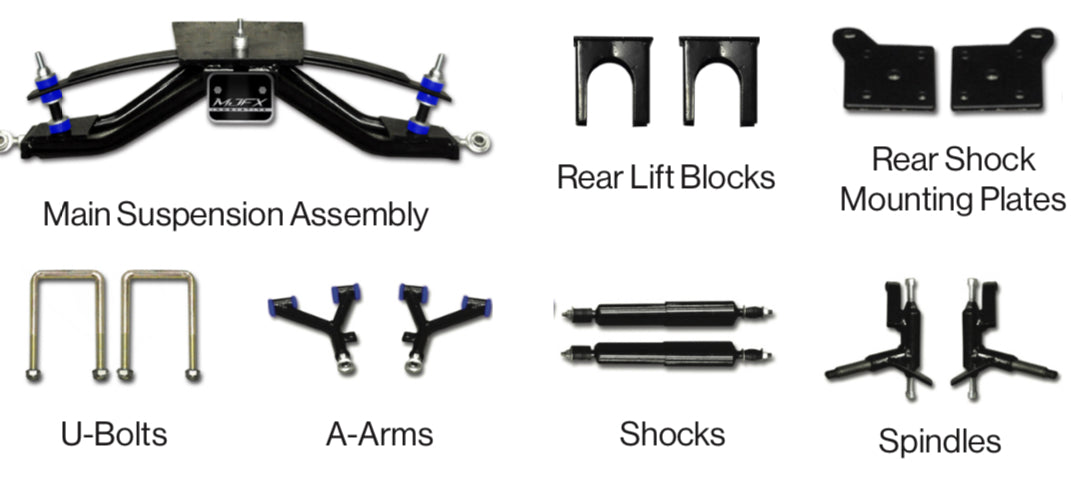-
Shopping Tools
-
Care & Maintenance
-
About
-
Dealer Login

Lift kits boost ground clearance and style, but they also raise the center of gravity, which can reduce stability and increase rollover risk—especially on turns or uneven ground.
Lift kits are not inherently safe on golf carts. While they make room for larger tires and improve obstacle clearance, the physics are unforgiving: a higher center of gravity (CG) means less margin before tipping, more weight transfer in corners, and a greater chance of loss of control on side slopes, ruts, and curbs.
Raising the chassis elevates the CG. On a quick steering input or an off-camber surface, the lateral load shift is higher and the cart reaches its tipping point sooner. The risk compounds if you carry rear passengers, tools, or a cargo box high above the axle line.
Changes to ride height can upset toe, camber, caster, and scrub radius. If the kit does not correct these, expect bump-steer, tramlining, and vague on-center feel. Poor geometry also chews through tires.
Even a well-engineered kit becomes unsafe if installed poorly. Common pitfalls include missed torque specs, reusing stretch bolts, failing to re-align, and not re-bleeding or upgrading brakes when moving to much larger tires. After any lift, a full alignment and shakedown inspection are essential.
Ask yourself these questions before you decide:
Lift kits bring real compromises. They raise the center of gravity, reduce stability, and can stress components—risks that grow with tire size and speed. If you must lift, keep it modest, widen the stance, upgrade braking and steering, and commit to careful operation and scheduled inspections. If you’re mainly after capability, consider safer alternatives first and choose well-engineered carts designed for your terrain. For models and options that fit your use case, explore modern golf carts and compare factory configurations before modifying.
